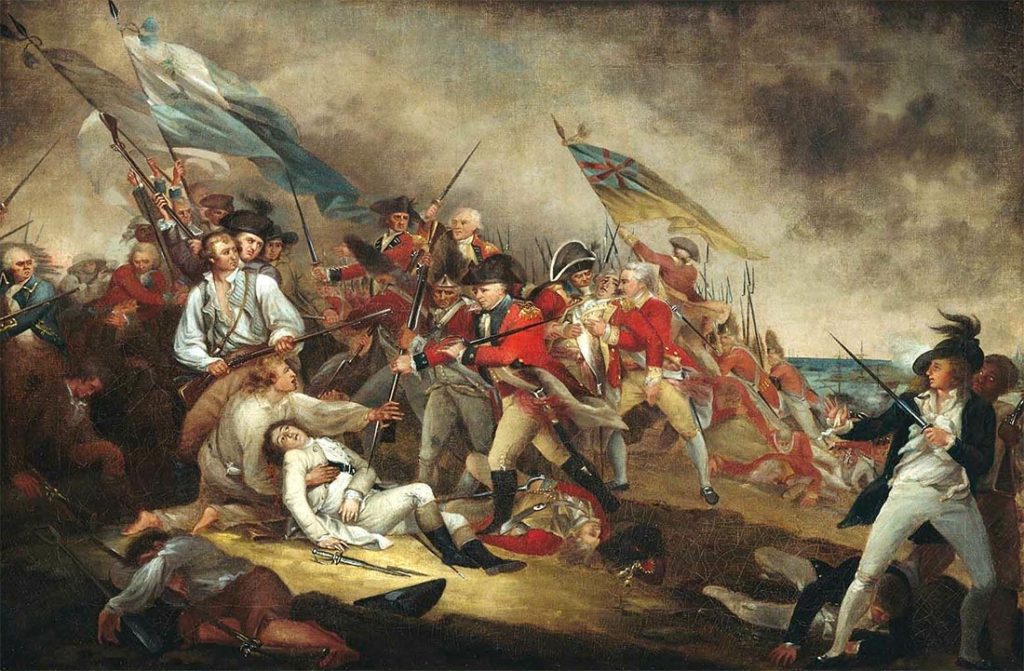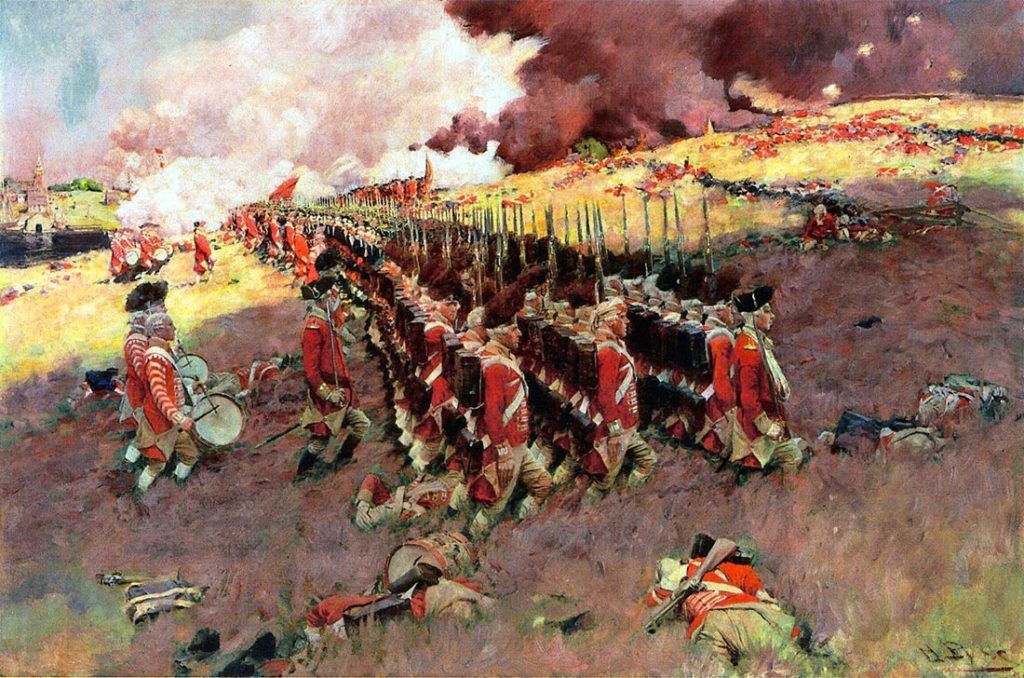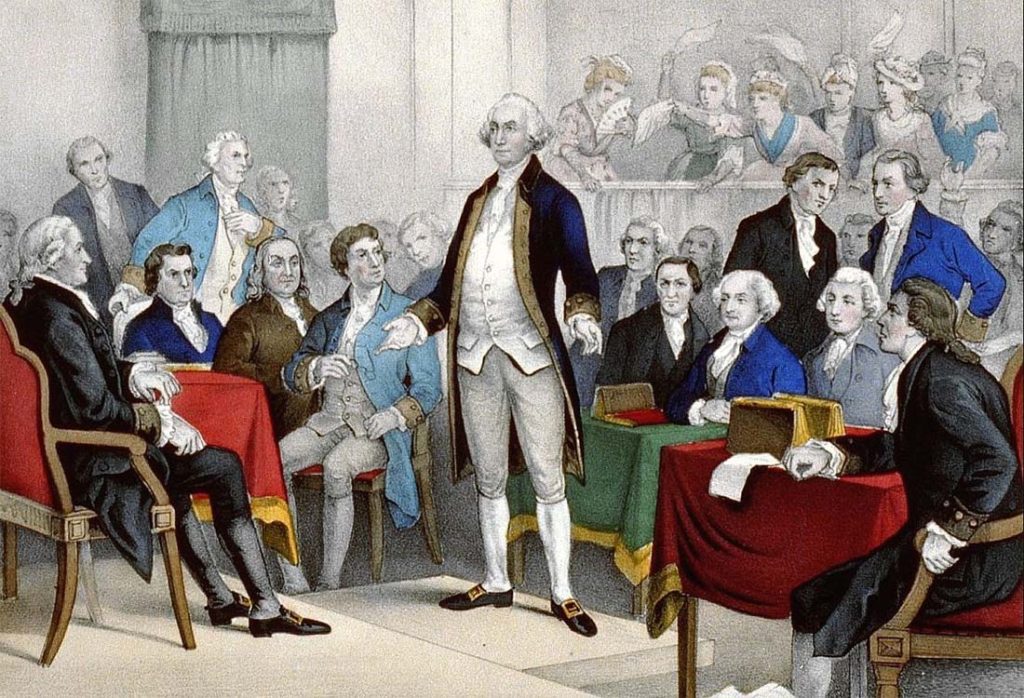Just weeks before the Battle of Bunker Hill, the Second Continental Congress met in Philadelphia. (The First Continental Congress had been in session only between September and October, 1774. This Second Continental Congress, established in May 1775, wasn’t disbanded until March 1781.) Here the delegates began to exercise some control over the unfolding war. A Continental Army was established, and French-and-Indian-War-veteran George Washington, who apparently had more military experience than anyone else available, was appointed as its head. The fact that Washington was from Virginia was important, signalling not only the support of the most powerful of the colonies, but also that those radical, Puritan Massachusetts men didn’t dictate everything! Still, it was one thing to create an army. It was quite another to actually outfit it. This would be costly; where was the money to come from? The Congress’s answer: issue paper money. We’ll discuss the impact of this decision in future sessions.
On 6 July, 1775—just a couple weeks after Bunker Hill—the Congress adopted the Declaration of the Causes and Necessity of Taking Up Arms, written by Thomas Jefferson and John Dickinson (and possibly prominent South Carolinian John Rutledge). Taxation without representation, the Declaratory Act with its “in all cases whatsoever” assertion, the hated Vice-Admiralty courts, the “Intolerable Acts”—each of these was invoked as justification for armed colonial resistance. The Declaration pointed out that the colonies had, separately and jointly, petitioned again and again for redress of their grievances, but to no avail. Parliament, the Declaration insisted, had attempted to “enslave” the colonies “by violence, and have thereby rendered it necessary for us to close with their last appeal from reason to arms.”
Despite all of this (indeed, despite functioning as a de facto government, or at least federation of governments), the Congress stopped short of issuing a declaration of independence. It was discussed, it was debated, but vestiges of loyalty to Britain yet remained—and thus no such declaration was produced in 1775. Indeed, the Declaration of the Causes and Necessity of Taking Up Arms explicitly denied that the colonists were seeking independence. Arms had been taken up “in defence of the Freedom that is our Birthright and which we ever enjoyed until the late Violation of it,” and those arms would be laid back down the moment “Hostilities shall cease on the part of the Aggressors…”
If the Declaration of the Causes and Necessity of Taking Up Arms was meant to make the British understand the American position so that they (the British) would deescalate, it failed badly. The British doubled down, in the process turning more American colonials into “rebels.” In nothing was this better demonstrated than in the December 1775 Prohibitory Act, which barred England from trading with England’s American colonies. Royal protection for American ships was also withdrawn. Henceforth, American ports would be blockaded by the Royal Navy—and American merchants on the high seas seized! It was around this time, too, that British authorities began hiring their German mercenaries (called “Hessians,” as many of them hailed from the German state of Hess-Cassel). Such actions couldn’t have been designed better to convert Loyalists and fence-sitters into “Patriots.”


